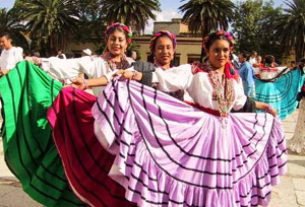This must surely be one of the great adventure stories of all time – how Hernan Cortés and about 500 conquistadores conquered a settled and established civilization in three short years, from 1519 to 1521. Distinguished scholar and historian Hugh Thomas has made good use of recently discovered archival material in both Spain and Mexico to produce a feast of reading for history buffs.
Cortés must have been an incredible leader – as well as being a total bastard. After landing at Vera Cruz he had his boats burned so that no one would have any thought of deserting or retreating. In occasional battles with the Aztecs on the march to Tenochtitlan (now Mexico City) Cortés often faced certain defeat but would somehow rally his men, seeming to say: “This is our big chance! Let’s go for it!” And he would lead his troops to victory over always superior numbers of enemy warriors.
One interesting reason why the Aztecs lost so many battles is that they wanted to capture prisoners alive, just so they could sacrifice them later, while the Spaniards were content just to kill enemy soldiers. Guess who won most of the time.
Thomas also explains the puzzling question about why the irresolute Montezuma didn’t crush these Spanish invaders when he certainly had all the resources to do so.
Cortés was effective at recruiting many of the local tribes to help him during his march to Montezuma’s capital city, even though he treated them just as abominably as did their rulers, the Aztecs. It was almost the only help he received as few back in Spain even seemed to know or care what he was up to.
The Spaniards were driven on by a lust for the gold and other abundant riches of the New World. But it was also a clash of two opposing cultures. As Thomas writes: “The Spanish had unbounded confidence in their own qualities, in the political wisdom of their imperial mission, and in the spiritual superiority of the Catholic Church.”
“Oh, what great good fortune for the Indians is the coming of the Spaniards,” gushed one historian in 1554. He was Spanish, of course. Just try to find even one Indian who would express those sentiments.
The Spaniards found much to admire in the city of Tenochtitlan. One conquistador wrote that the houses there were superior to those of Spain. The Aztecs produced clothes and jewellry that astonished the Europeans. However, they had that one little custom which, in Spanish eyes, was unforgiveable – human sacrifice.
As one monk wrote: “O, the strange bestiality of these people. In many things they have good discipline, government, understanding, capacity and polish but, in others, strange bestiality and blindness.” The conquistadores wanted to end the bestiality and build on the good things they found in this surprising civilization . Ultimately they wanted to hand it on a platter to their emperor, Charles V, otherwise known as “The Sword of Christianity”. And they did just that.
This is one great story, beautifully told.
 Conquest: Montezuma, Cortés, and the Fall of old Mexico
Conquest: Montezuma, Cortés, and the Fall of old Mexico
By Hugh Thomas
Simon & Schuster, 1993
To order from Amazon Books: Paperback


